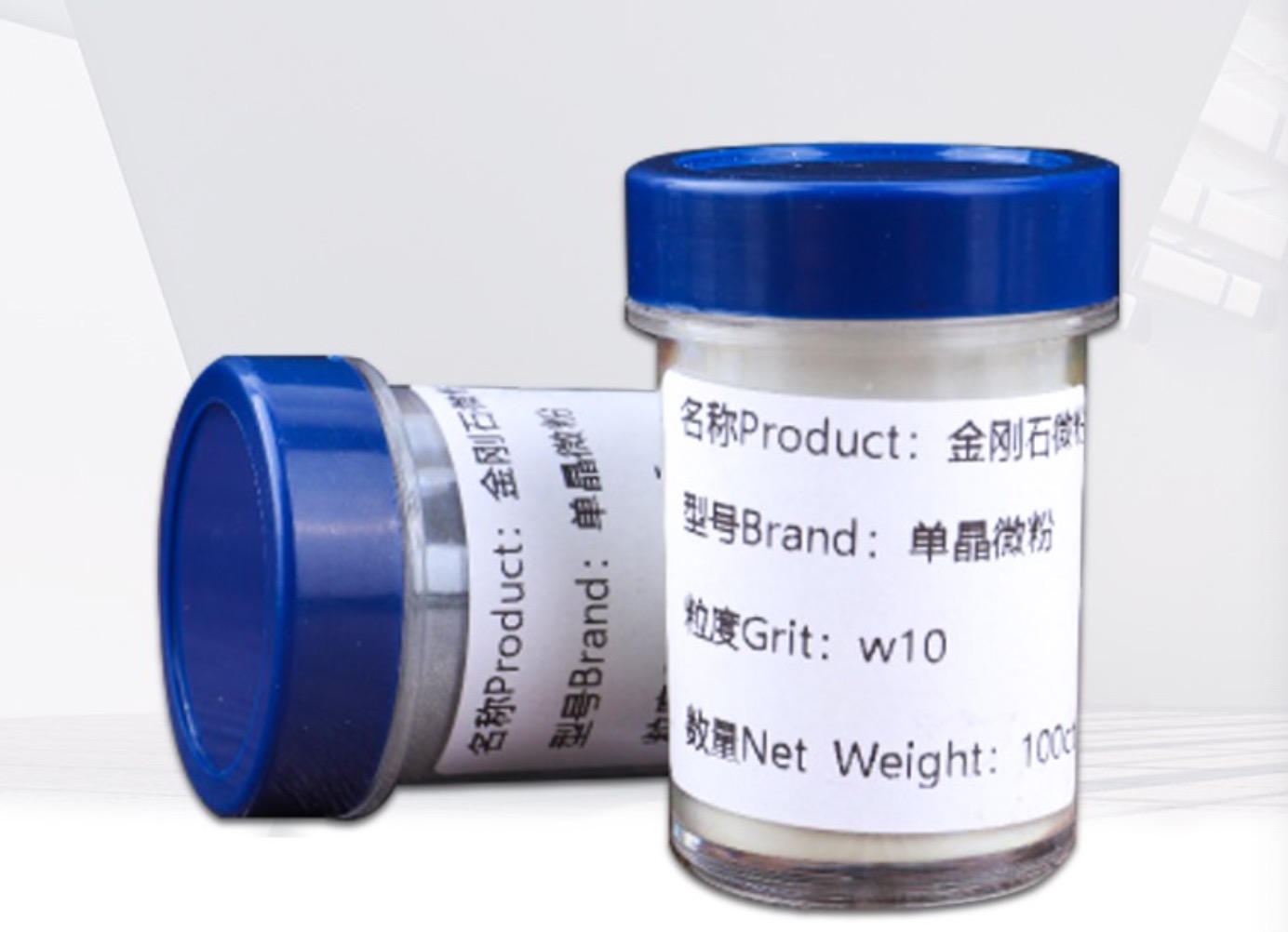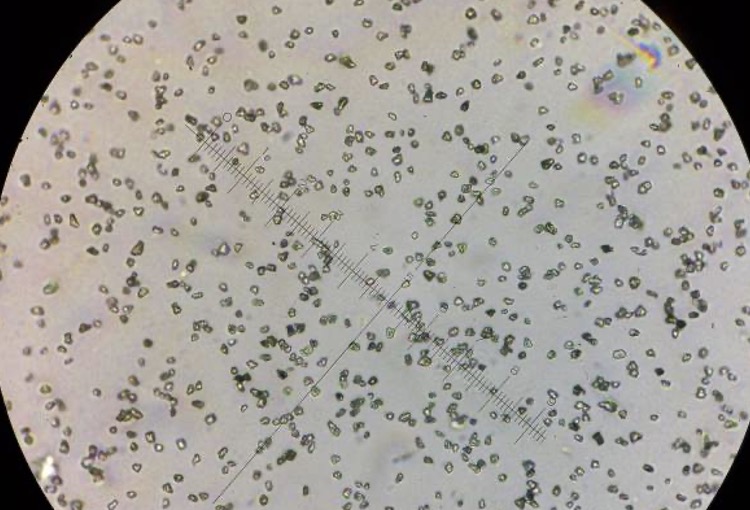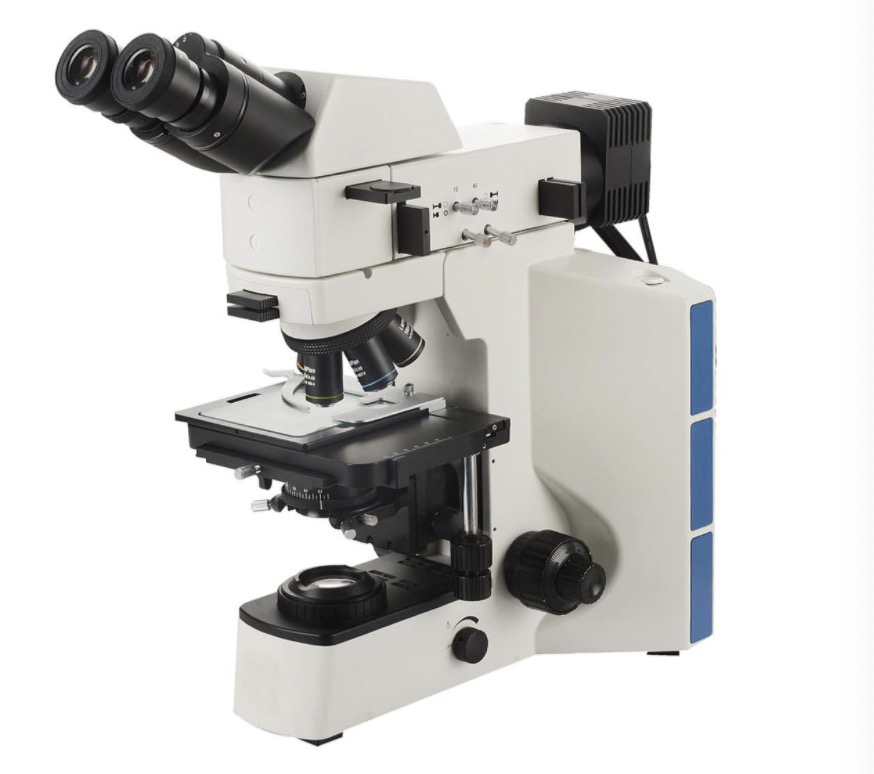Generally, powdery materials with a particle size of fewer than 54 microns are called micro powder, and those with a particle diameter of fewer than 5 microns are called fine powders. The particles larger than 3.5 microns were separated by the sedimentation method, and the mixture smaller than 3.5 microns was separated by a centrifugal method.

I. The Main Application of Diamond Powder
Diamond micron powder is mainly used for fine grinding, grinding, and polishing of non-metallic hard and brittle materials. Generally, 0~0.5 microns to 6~12 microns are used for polishing, 5~10 microns to 12~22 microns are used for grinding, 20~30 microns are used for fine grinding. Diamond micron powder is mainly used in the following four aspects:
- Diamond powder is made into diamond grinding pastes, which is widely used in processing precision parts such as cutting tools, measuring tools, optical instruments, electronic devices made of materials such as hard alloy, high aluminum ceramics, optical glass, instrument gems, semiconductors and its processing roughness can achieve the mirror effect.
- Diamond powder is widely used in the manufacture of fine grinding pieces, ultra-fine grinding pieces, electroplating products
- Diamond powder is the main raw material to manufacture polycrystalline diamond products, such as geology, petroleum drill, cutting tools, drawing die, etc.
- Diamond powder is used in the manufacture of abrasives and polishing fluids.
Ⅱ. Quality inspection of diamond powder
Diamond micron powder is mainly used for grinding and polishing, and the control of particle size is particularly important. If there are oversized coarse particles, the workpiece will be scratched, and the work of the previous process will be wasted. Therefore, the quality inspection of diamond micro powder is an important link to ensure the quality of micro powder products. Only by taking it seriously can we produce high-quality micro powder to meet the needs of users.
The quality inspection of diamond micro powder mainly includes size range, particle size distribution, particle shape, impurity content, marking and packaging. The main particle sizes are M0/0.25 M0/0.5 M0/1 M0.5/1 M1/2 M2/4 M3/6 M4/8 M5/10 M6/12 M8/12 M8/16 M10/20 M15/25 M20/ 30 M25/35 M30/40 M35/55 M40/60 M50/70. Particle size ranges for special applications are negotiated between supplier and purchaser.
The following table is the size range of M0.5/1:
| Particle Size | Nominal Size Range μm | D5(Min.) μm | D50 μm | D95(Max.) μm | The Largest Particles μm |
| M0.5/1 | 0.5~1 | 0.5 | 0.75±0.15 | 1.0 | 3.0 |
D50 refers to the particle size of a sample when the cumulative percentage of particle size distribution reaches 50%. Its physical meaning is that the number of particles with a particle size larger than it accounts for 50%, and the number of particles smaller than it also accounts for 50%. D50 is also called the median diameter or median particle size, and it is often used to represent the average particle size of the diamond powder.
Ⅲ. Particle size detection of diamond powder
In production practice, the laser diffraction method is mainly used to measure the diameter of diamond powder particles. The commonly used instruments are The British Malwan Mastersizer 2000 laser particle size analyzer, the American Microtrac company S3500 series laser particle size analyzer and the X100 laser particle size analysis instrument.
The advantages of the laser particle size analyzer are that it is convenient and fast to measure the particle size distribution curve and concentration degree of samples. The more spherical particles, the more accurate the measurement, widely used in the diamond industry. The disadvantage of this method is that it cannot accurately measure irregular shape and strip particles, so its numerical measurement is low. This may be related to its measurement principle. In software measurement and calculation, irregular shape and long strip particles are converted into sphericity, and then the diameter of the sphere is calculated as the particle size, so the measurement data is low. In order to overcome this shortcoming, in the production practice, the image method and biological microscope method are used for inspection, mainly to check the large particles and long particles, and the combination of laser particle size analyzer and microscope is used to ensure the quality of the micro powder.
The following figure is the report of the laser particle size analyzer of M0.5/1.5 micron powder. The particle size distribution of the micro powder is concentrated and the particles are uniform.

Ⅳ. Particle Size Testing of DiamondPowder
There are many kinds of instruments that can be used to measure the particle size of fine diamond powder, such as a biological microscope, projection microscope, image analyzer, projective electron microscope, scanning electron microscope, Kurt particle size analyzer, etc. Choose appropriate magnification when using the biological microscope to observe microparticles. When observing 1.5 micron fine powder, magnification 1500 times or 2000 times observation, the effect is better. Microscopic observation of microscopic particles to 0.25 micron and particles smaller than 0.25 micron can be observed by scanning electron microscopy.

Ⅴ. Detection of Particle Size Distribution of Diamond Powder
The particle size distribution has a certain effect on the cutting efficiency and grinding roughness of materials. For fine grinding and polishing process, it is required that the content of coarse particles and long particles should be less, the content of basic particle size should be high and the distribution should be concentrated, and the composition of particle size should be uniform. In particular, the micro powder used for electroplating products requires the micro powder to be of good height and uniform particle size composition, so that it is easier to control the edge height of the micro powder when electroplating, so as to achieve good use effect of products.
The following picture shows the image of diamond micro powder of good quality W1 under the biological microscope of 1500 times magnification, with uniform particle size distribution.
Ⅵ. Particle Shape Detection of Diamond Powder
In polishing, the particle shape of micro powder is the approximately spherical particle and regular shape is better. In the micropowder standard, needle-stick particles refer to needle-like or rod-like particles with the ratio of long axis to short axis exceeding 3:1. No needle rod particles larger than the maximum particle size are allowed in the micron powder, but the length of needle rod particles between the maximum nominal size and the maximum particle is allowed to exist, the content of not more than 3%.
Some of the diamond micro powders show transparent flake particles when observed under the microscope, and the size smaller than D5 can be excluded. Flake particles in diamond micron powders are not allowed to exceed 5%.
Ⅶ. Impurity Detection of Diamond Powder
The impurity content of diamond powder is not more than 2%, which usually contains metal impurities and non-metal impurities, mainly Including Si, Fe, Mn, Co, Ni, Ti, Ca, Mg, Na, etc. The quality of PDC diamond powder is relatively high, and the impurity content is controlled within about 50PPM.
The impurities in the micron powder were measured by the combustion weight loss method. 0.5 grams of micro powder was taken from the sample and put into a crucible of constant weight, placed in a muffle furnace, and burned at 1000 degrees to constant weight. The residual weight was the impurity mass, and the mass percentage calculated was the impurity content。
Ⅷ. Cutting Force Measurement of Diamond Powder
Generally speaking, under the microscope, the flake powder has low strength, the block diamond powder cutting force is strong and has good quality. The coarse-grained powder is easy to judge, Good powder under the microscope, the core appears transparent and good transparency, surrounded by black edge outline. Low grade of the powder, the whole observation under the microscope is black.
Ultra-fine powder refers to the micro powder of 1.5 microns or less, which needs to be observed under an oil lens, the objective lens is immersed in cedar oil, and it can be observed under 1600 magnification. Conventional glycerin sample preparation, easy to agglomerate, observation effect is poor. The quality of ultrafine powder can be distinguished from imaging, which requires more practice and observation. Another advanced method is to use a German-made differential thermal analysis instrument to determine the initial oxidation temperature of the powder. But the high price of this instrument hinders its spread in industrial production.
In order to solve this problem, Henan Crownkyn Company through a lot of practice, found a new dispersant, successfully solved the dispersion problem. Oil immersion using a microscope, imaging clear.
During the inspection, Henan Crownkyn Company observed the fine powder by staining and judged the quality of the fine powder according to the color of the graph.
In order to better observe the image, avoid the displacement of micro powder in the dispersant, and take a clear image, Henan Crownkyn Company adopts adhesive film sample preparation, fixed micro powder, and take the image of real micro powder under the biological microscope.
Ⅸ. Conclusion
Synthetic diamond powder is mainly used in grinding and polishing processes, users often require the lowest diamond concentration and the fastest cutting speed, to obtain the best surface roughness and workpiece surface quality. In order to achieve such a high use effect, high-quality diamond micron powder is needed. The high-quality diamond powder should be controlled from the following aspects:
(1) Diamond strength: The strength of diamond raw materials should be high. The micro powder made of diamond produced by big manufacturers in Zhongnan Diamond Company and Huanghe Whirlwind Company as raw material has good quality, high wear resistance, and high cutting force. It is usually the micro powder made of yellow diamond powder in the market. The micro powder made of low-process diamond material produced by small manufacturers has relatively poor wear resistance and cutting force. It is usually that the micro powder made of green diamond powder. The micro powder of green diamond material is suitable for low-end resin bond products, which is usually exported to India at cheap prices. When polishing hard non-metallic materials such as crystal and zircon, high-quality diamond powder should be used. Resin bond diamond micron powder has no cutting force, cannot grind to the surface of the convex mark and the polishing effect is poor.
(2) The size and content of coarse particles: coarse particles should be controlled in the scope of national standards, the less the better. Larger than coarse particles is large particles, easy to cause scratching workpiece.
(3) Particle size distribution: the higher the concentration of particles, the better.
(4) Particle Shape: the application of fine powder with good roundness in polishing has a better effect; Diamond powder with low magnetic and high strength has a good effect in diamond electroplating wire saw. The general shape of micro powder, such as strip, block and flake, used in resin bond grinding wheel, is relatively sharp.



-80x80.jpg)